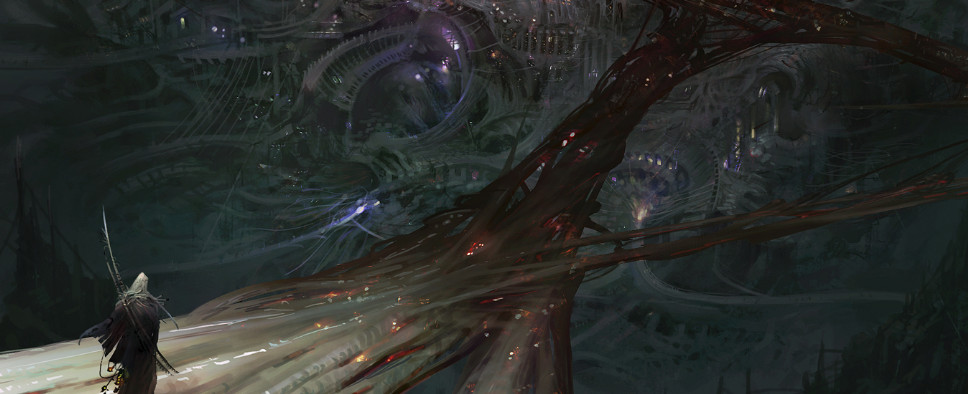How Isometric Environments Are Made?
-
Category: News ArchiveHits: 2270

If, like me, you prefer isometric games to their first- or third-person counterparts, this article where Paul Fish, former Obsidian artist now working for InXile Entertainment, talks about the tools and techniques used in creating visually impressive isometric environments might be right up your alley. A few snippets:
Introduction
My name is Paul Fish, I am originally from Minnesota but I have been living in southern California for almost 15 years and have been working professionally as an Environment Artist in the games industry since 2007. I’ve worked on a variety of titles during my career including Fallout: New Vegas, South Park: The Stick of Truth, and Torment: Tides of Numenera. I’m currently working as a Senior Environment Artist on Wasteland 3 at inXile Entertainment. I started playing games at a very young age but it wasn’t until I was in high school that I really began to take an interest in how the games I played were made. It was around that time that I started tinkering with level editors and dabbling in 3d modeling software. After high school, I moved to southern California to pursue my education and career as an artist.
Isometric scenes
With these isometric scenes it is sometimes easy to look at a zoomed-out design blockout or concept art and see things in simplified terms, but once you see how close the camera is in-game, you start to realize how much detail will be needed. Creating art for these scenes can be a time-consuming process for artists, especially with a small art team. For larger scenes, I’ll often break them down into distinct areas and work on things in manageable chunks. An example is the Underbelly area in Torment: Tides of Numenera. This was a fairly large level and it had a number of unique parts, a foundry, a shanty town, various merchant shops, and a mined-out tunnel area. Since each of these areas are fairly distinct from one another I will create separate asset lists for each and try to focus on one area at a time. This keeps me focused and prevents me from jumping from one random bit to the next, which for me is an easy thing to get lost in when dealing with a large level. I also make prioritized lists for myself because if I don’t I can sometimes get sidetracked focusing on some small details that I think are cool but are not necessarily that important from a design or narrative point of view.
Architectural elements
I’ve been very fortunate that for much of the work that I’ve done for these games I have had some excellent concept art to work from, detailed narrative descriptions, or, at the very least, been provided with plentiful reference and art direction. That being said, when I first started working on art for pre-rendered isometric games it was sometimes challenging to incorporate a proper level of detail in my models and textures because I had been so used to creating relatively low-detail, optimized models and textures intended for real-time use. It took a bit of time to get comfortable using mesh detail where I would normally have used normal maps and to realize that I didn’t need to be overly concerned with polycounts or texture sizes.
[...]
Dungeons and open environments
For me personally enclosed spaces and especially smaller dungeon levels are fun to work on because everything I need to present is encapsulated in a small area and I know more or less exactly what the player will be looking at as they walk through the scene. Dungeons and interiors also offer a unique opportunity for lighting, since there’s no natural light I get to decide how everything will be illuminated, I can get a bit more creative with how the scene is presented visually and I can draw attention to small visual storytelling elements more easily.
Environmental storytelling
Environmental storytelling definitely plays a big part in these games. In many cases you’ll revisit the same areas many times during the course of a playthrough so there needs to be lots of little storytelling elements packed into every nook and cranny. One thing that makes this job easier on these types of games is the wealth of detailed text that has been written already to describe places and events. For each area I work on there exists pages and pages of design documents with character and quest descriptions, dialogues, lore, etc. I can get a really good sense of the flavor of an area before I even get reference or concept art. It can be really interesting working on something where the narrative text the player reads is sometimes more detailed than the pre-rendered backgrounds.
Costs
Creating all of the art required for scenes like these can take an artist anywhere from a few days to a month depending on how large the scene is and what is in it. Some environments contain a lot of unique assets that need to be carefully constructed while others might be largely comprised of kitbashed pieces borrowed from existing scenes. As I mentioned previously, I didn’t start using procedural texturing tools until the late stages of development on Torment: Tides of Numenera but I think that tools like Substance Painter and Substance Designer would have been an enormous help getting a lot of these environments done more quickly. Another thing I think we could have utilized more heavily to save time are game-ready texture/material libraries (Gametextures, Quixel Megascans, etc). Taking things like creating commonly used materials off an artist’s plate allows them to focus on other aspects of an environment.

